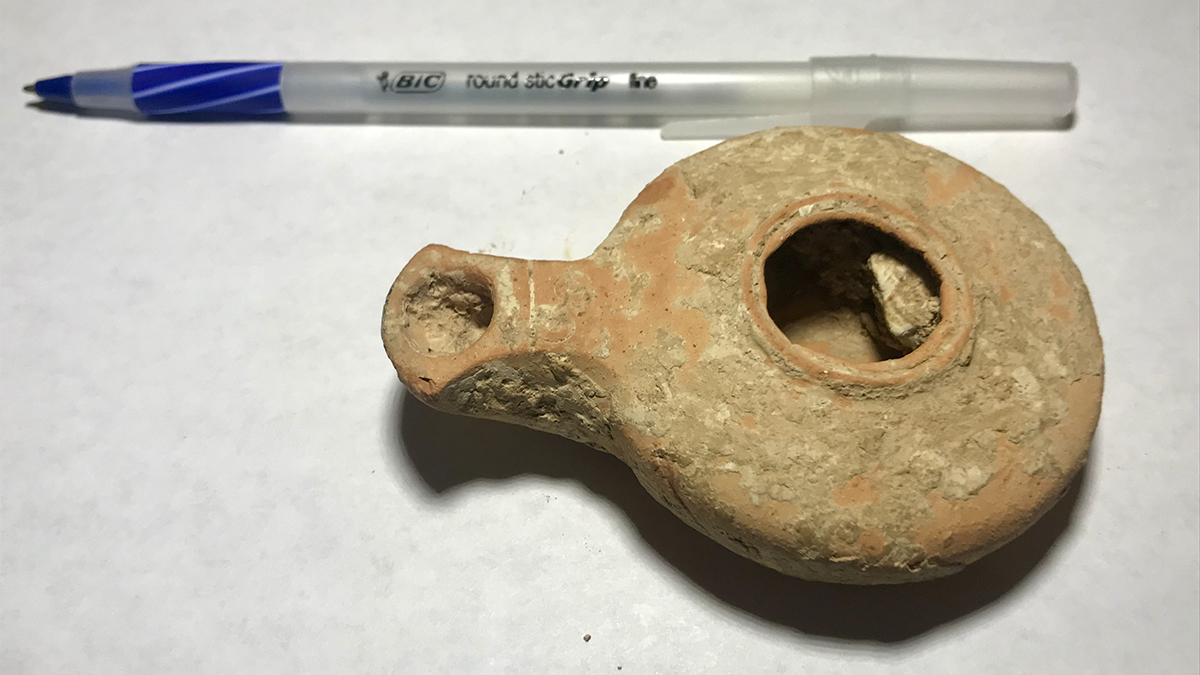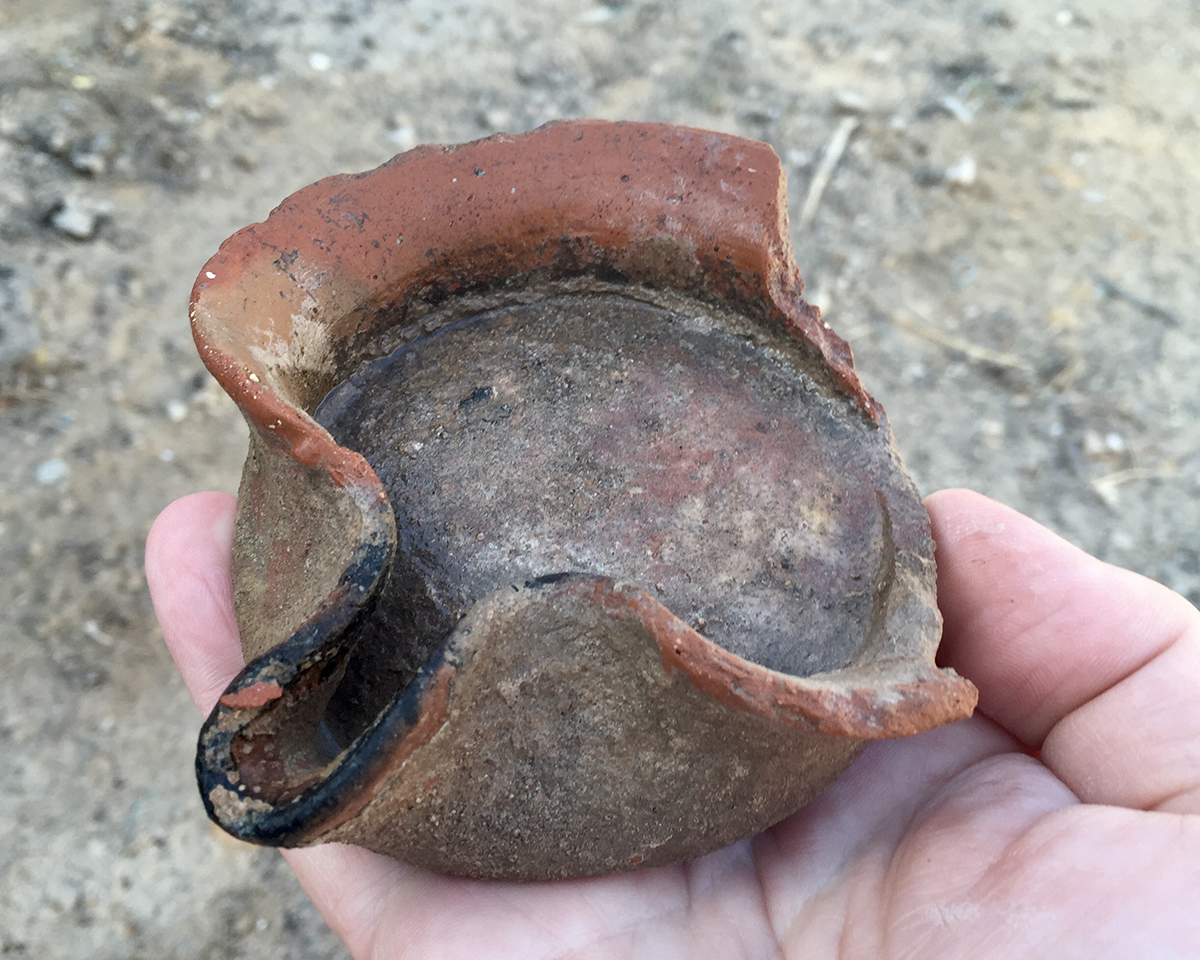
by Luke Chandler
Synopsis: Seeing ancient oil lamps helps us find greater meaning in Jesus’s teaching.
Ancient oil lamps are common finds on an archaeological dig. We have excavated many thousands of them from throughout the biblical period. Most mentions of lamps in the Bible speak of lighting for the Tabernacle or Temple, but Scripture also uses the term to represent one’s legacy or future (1 Kings 15:4; Prov. 24:20; et al.). Jesus mentioned lamps in some of His teachings, including the Sermon on the Mount (Matt. 5) and the parable of the Ten Virgins (Matt. 25).
How should Christians picture ancient oil lamps when reading the Bible? Typical lamps were small, ceramic vessels that could be carried in the palm of one’s hand. This is true of lamps from the time of Jesus, the kings, the judges, and even the Patriarchs. Styles changed with time, but ancient lamps from different eras were always around the same size. Today, when people see their first ancient lamp, they usually say something along the lines of, “It’s so small!”
Though lamp styles changed over the centuries, the technology remained the same. Lamps typically burned olive oil with a flax wick. Old Testament lamps were open-topped, essentially shaped bowls, but New Testament-era designs had closed tops with openings for the wick and the oil. Lamps from Abraham’s time looked different than those from Jesus’ time, but they worked the same way and shared the same purpose.
Understanding ancient oil lamps helps us to comprehend some of Jesus’s teachings better. Let us consider one of His most famous:
You are the light of the world. A city set on a hill cannot be hidden. Nor do people light a lamp and put it under a basket, but on a stand, and it gives light to all in the house. In the same way, let your light shine before others, so that they may see your good works and give glory to your Father who is in heaven (Matt. 5:14-16).
Jesus does not mention how big lamps were in His time, but their small size would have been implicitly known to the audience. Like those lamps, people are small and look different from one another, but even a little light is easy for others to see. Does not this offer encouragement, especially when we may feel particularly small or humble?
We also benefit from our understanding of Jesus’s main point. He links light to things we do day-to-day. This is appropriate because light is actually energy. Light does not happen without something being done. Any glow or flame is the result of chemical and molecular reactions expending energy. In this same way, Jesus equates our light to “good works.” Just as lamps produced a flame by burning olive oil, we produce light when we do things that may draw people to God in some way.
Our culture certainly appreciates good works. We designate specific days to do good for someone else, as on Mother’s or Father’s Day, Valentine’s Day, or an anniversary. Jesus wants us to shine continually with the purpose of moving others to glorify God. As lamps of all styles were made to give light, we are all created for a common purpose. God designed us to do good works that may lead others to Him.
Jesus’s words give us a goal for each day. Even seemingly insignificant disciples can do some good work or service that may draw another to God. Whether through a random act of kindness or by attending to someone in need of help, shine with some good work that may draw any who observe it toward the Lord.
Archaeology offers real benefits to Christians. Understanding an ordinary oil lamp brings us closer to the original biblical message. We see what they saw in their mind’s eye while listening to Jesus. We can bridge the gap of time and space between first-century Palestine and modern America to gain a richer understanding of the original message.
Let us conclude with this final thought. Sometimes we may hesitate to give light because we would rather receive it. Are you in desperate need of light? Remember that when we shine for others, the energy also reflects back to us. It is through godly service to others that we find true illumination. 


Image-1 Caption: A Herodian-style lamp from around the time of Jesus

Image-2 Caption: A newly-excavated lamp from the time of the Judges (ca. 13th century BC)